Database
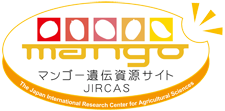
The JIRCAS Mango Genetic Resources Site has been open to the public since 2017, providing information on mango genetic resources to researchers, producers, and consumers in Japan. In response to recent many visits and inquiries from overseas, we have reorganized the information and launched an English version of the site with content specifically for overseas users.
The JIRCAS- Sugarcane germplam database is open-access database providing information relating to the morphological and agronomic characteristics of Saccharum spontaneum and Erianthus germplasm in Thailand. These morphological and agronomic characteristics were characterized and evaluated as part of the JIRCAS sugarcane breeding project conducted by JIRCAS and the Khon Kaen Field Crops Research Center (KKFCRC) in Thailand.
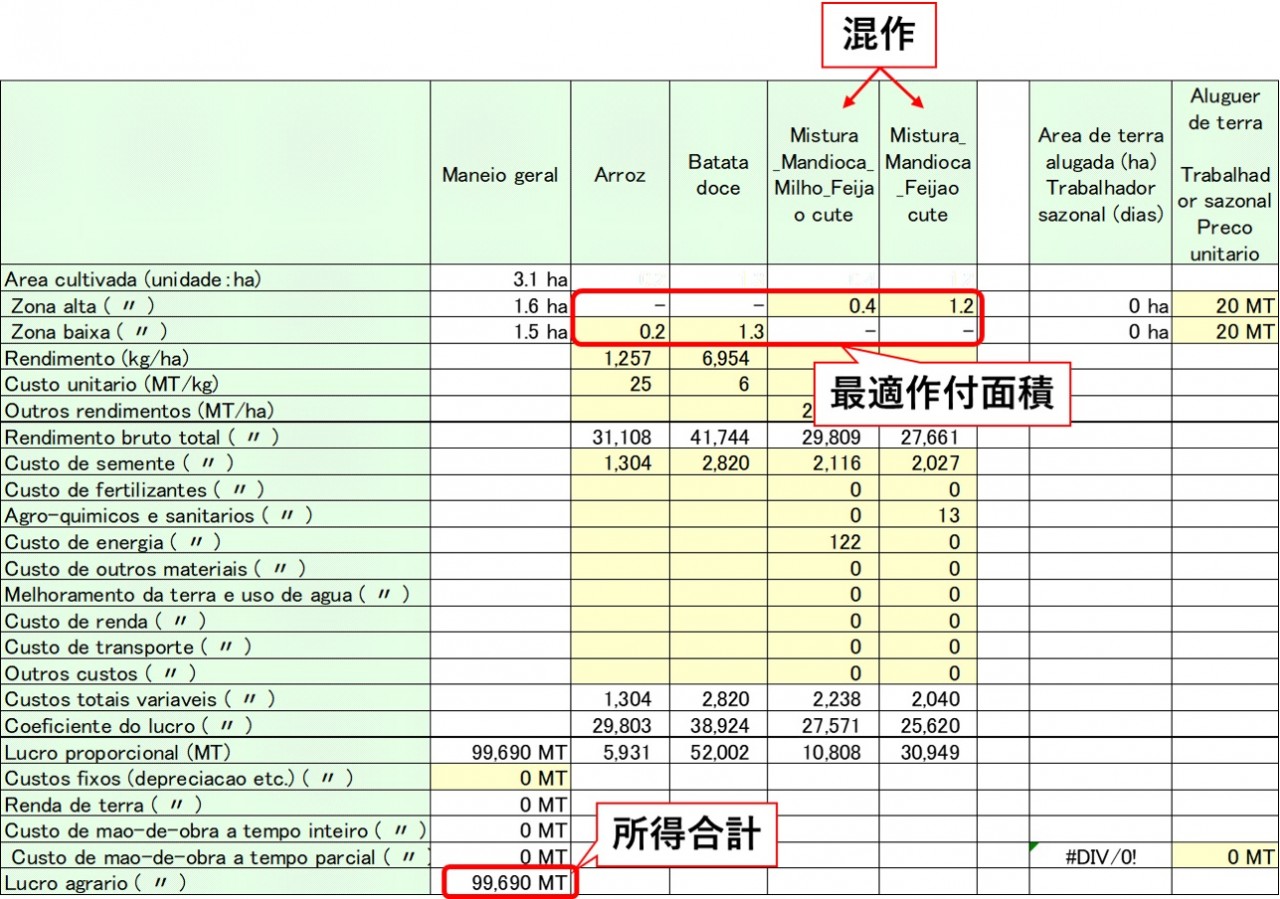
BFMe, BFMmz, BFMgh, and BFMbf are user-friendly programs that can be used to suggest improved farming plans based on a farm management model for assisting smallholder farmers in Africa (https://www.jircas.go.jp/en/publication/research_results/2018_b02). We plan to use the programs for supporting farmers’ decisions under related research projects including the “Development of soil and crop management technologies to stabilize upland farming systems of African smallholder farmers” (https://www.jircas.go.jp/en/program/prob/b6)
The “Thai Local Vegetables Database” was originally compiled and published on the web in 2010 by the collaborative research team of Japan International Research Center for Agricultural Sciences (JIRCAS), The Institute of Food Research and Product Development (IFRPD) of Kasetsart University, the World Vegetable Center-East and Southeast Asia Regional Office and National Food Research Institute of Japan. Its purpose is to add new value to local agricultural products, with the aspiration that the database on Thai local vegetables will contribute to local agriculture, forestry and fisheries industries while providing safe and healthy food for the global population.
The Japan International Research Center for Agricultural Sciences (JIRCAS), together with other research institutions in Asia, conducts joint research to deepen the understanding of native agricultural, forestry, and fishery products, processed foods, and traditional fermented foods, promote their use, and contribute to enriching people’s lives around the world. This database is based on the bibliographic information compiled by the Institute of Food Research and Product Development (IFRPD) at Kasetsart University in Thailand. It categorizes Thailand’s diverse fermented foods by raw material, such as fishery products, livestock products, fruits, vegetables, rice, and soybeans, and provides photos, explanations, and descriptions of production methods. This information has been available on the JIRCAS website since FY2015. In 2024, the content on the website was partially revised based on the latest information, updating photos, and including information on microorganisms along with reference literature.
The soybean varieties and lines were cultivated and their characteristics were evaluated in the fields of the Soybean Research Center, Jilin Academy of Agricultural Sciences at Gongzhuling City in Jilin Province with the selected cultivation method (row spacing of 65 cm with single plants about 8 cm apart, sown in April) in 2001-2003. The data of quantitative traits fluctuate according to the differences in cultivation conditions. And the listed genetic resources belong to Northeast China, particularly Jilin Province, Heilongjiang and Liaoning Provinces, but some resources from other areas were also included. Please be aware that there are varieties and lines with no data for protein and oil contents
 This is a photographic web database introducing underwater plants commonly found in coastal areas of Thailand. It is re-edited a same name pictorial, which was published in March 2012. The information was compiled during an international collaborative research between Kasetsart University (KU), King Mongkut's Institute of Technology Ladkrabang (KMITL) and the Japan International Research Center for Agricultural Sciences (JIRCAS).
This is a photographic web database introducing underwater plants commonly found in coastal areas of Thailand. It is re-edited a same name pictorial, which was published in March 2012. The information was compiled during an international collaborative research between Kasetsart University (KU), King Mongkut's Institute of Technology Ladkrabang (KMITL) and the Japan International Research Center for Agricultural Sciences (JIRCAS).
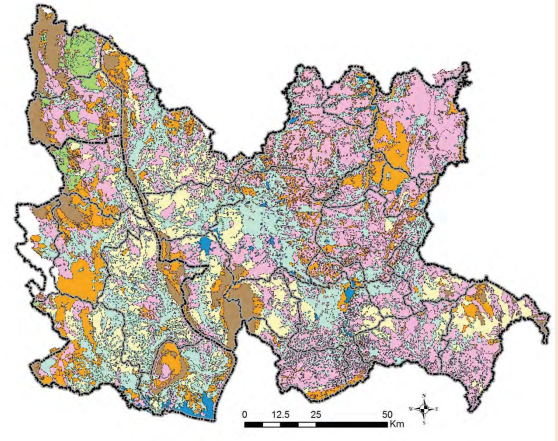
Teak (Tectona grandis) is a valuable indigenous tree species in Thailand. Teak wood products are used in making high quality furniture and as building material for houses, etc. It is one of several economic tree species suitable for farm forestry management, and plays a vital role in promoting forest restoration and regional development, thanks to rapid tree growth and high timber prices. Teak has several characteristics, including affinity to specific soil types and conditions; hence future yield depends on site suitability for teak plantation. Decision support information on determining site suitability is important to teak farmers. There had been no such maps that quantitatively showed soil suitability for teak plantation; thus, not a few farmers came to grief after realizing that they had planted on unsuitable sites. Therefore, the Japan International Research Center for Agricultural Sciences (JIRCAS) has carried out a joint research project with the Royal Forest Department (RFD) in order to promote teak farm forestry, and contribute to the improvement of the rural livelihood.
Lao PDR has many forest preservation, management and other such projects. It is essential to collect and preserve basic information on trees unique to the country. To this end, specimens were created from approximately 300 samples taken from secondary forests after swidden in Vientiane Province of central Laos from 2011 to 2015. A database was created of high-resolution images taken with a CCD-sensor-equipped scanner as the samples were identified.
JIRCAS, in collaboration with the National Agriculture of Forestry Research Institute (NAFRI) of Laos and its affiliate Forestry Research Center (FRC), has been conducting dietary surveys and non-timber forest product surveys in rural areas of Laos for many years, and has documented the wildlife used by local residents. This time, we have created a wildlife database providing information in local language on the wild animals and plants consumed by people in the rural areas in Central Laos.

"EDITS-Cowpea database" is an open-access database that contains information on major characteristics of cowpea (Vigna unguiculata (L.) Walp.), one of important leguminous crops in Africa. This database enables cowpea breeders and researchers to identify the potential genetic resources to facilitate utilization of wide genetic diversity to further breeding and crop utilization activities. This database was developed under the "EDITS-Cowpea project (2011-2016)" of JIRCAS.
Interspecific hybridization between Asian rice (Oryza sativa L.) and African rice (Oryza glaberrima Steud.) started at Africa Rice Center (AfricaRice; former name: Western Africa Rice Development Association or WARDA) in early 1990s to produce a new plant type suited for rainfed conditions. The aim was to combine the high yield potential of O. sativa (based on high spikelet number caused by secondary branches on the panicle) and the useful traits of O. glaberrima (such as rapid leaf canopy establishment, high nitrogen responsiveness and resistance to major stresses, including drought, blast disease and iron toxicity).The BC2F1 progenies between some Asian Japonica-type rice varieties, namely, WAB56-50, WAB56-104 and WAB 181-18, which were bred in AfricaRice and used as the recurrent parents, and an African rice variety, CG14, were established and favorable lines were selected after fixation. The new plant types were then named as New Rice for Africa (NERICA) in 1998. The first seven varieties, NERICAs 1–7, were released by AfricaRice in 2000 and an additional 11 varieties, NERICAs 8–18, were released in 2005.

Weeds are a major harmful factor to the development and expansion of rice cultivation in the lowlands of Sub-Saharan Africa. Since fundamental information on the biological traits of major weed species, including some native plants, is indispensable to the establishment of the above system, photographs and scanned images of around 90 plant species which were collected on September, 2009 in and around rice fields of the lowland savanna of northern Ghana, are shown herewith collectively in a Database.

The Fakara Data collected by our institutions, vary in their attributes and formats and have been partially accumulated in the different databases. Therefore, JIRCAS, ICRISAT and ILRI wished to document the Fakara Data and integrate them into a metadatabase with contents in order to facilitate the exchange and effective utilization of the Fakara Data collected and stored by the three institutions. To achieve this JIRCAS has contracted ICRISAT for a commissioned research. This site is part of the products delivered by this commissioned research.
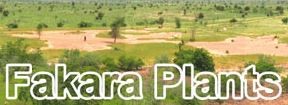 This website presents a collection of photographs and descriptions of a total of 137 plant species frequently found in the Sahel (the transitional zone between the Sahara Desert and savanna). It forms a part of the research program, "Improvement of Fertility of Sandy Soils in the Semi-Arid Zone of West Africa through Organic Matter Management", being undertaken by the Japan International Research Center for Agricultural Sciences (JIRCAS), in collaboration with Kyoto University, the University of Tokyo, and the International Crops Research Institute for the Semi-Arid Tropics (ICRISAT) -Niamey, and Institut National de Recherche Agronomique du Niger (INRAN) since 2003. This visual guide is one of the outputs of the research study, and intends to facilitate communication about these plants among people involved in the research and management of the Sahelian ecosystems.
This website presents a collection of photographs and descriptions of a total of 137 plant species frequently found in the Sahel (the transitional zone between the Sahara Desert and savanna). It forms a part of the research program, "Improvement of Fertility of Sandy Soils in the Semi-Arid Zone of West Africa through Organic Matter Management", being undertaken by the Japan International Research Center for Agricultural Sciences (JIRCAS), in collaboration with Kyoto University, the University of Tokyo, and the International Crops Research Institute for the Semi-Arid Tropics (ICRISAT) -Niamey, and Institut National de Recherche Agronomique du Niger (INRAN) since 2003. This visual guide is one of the outputs of the research study, and intends to facilitate communication about these plants among people involved in the research and management of the Sahelian ecosystems.
 Welcome to our “Yam variety identification toolkit” web site! The “Yam Variety Identification Toolkit” is an open-access toolkit that enables various users to identify the variety/line of white Guinea yam (Dioscorea rotundata Poir) with simple DNA (SSR) marker techniques. This page is gate way to bring you to various information and tools for the variety identification of white Guinea yam, important staple crop in West Africa.
Welcome to our “Yam variety identification toolkit” web site! The “Yam Variety Identification Toolkit” is an open-access toolkit that enables various users to identify the variety/line of white Guinea yam (Dioscorea rotundata Poir) with simple DNA (SSR) marker techniques. This page is gate way to bring you to various information and tools for the variety identification of white Guinea yam, important staple crop in West Africa.
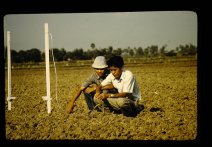
The slides in this photo archive were created from photographs collected through field surveys and research cooperation in various countries around the world by researchers of JIRCAS and the Tropical Agriculture Research Center (now called the Tropical Agriculture Research Front) of the Ministry of Agriculture, Forestry and Fisheries.


